When it comes to touchpad sensitivity, everyone has different preferences. While some people like to press hard, others prefer to be gentle. If the default touchpad sensitivity level of your Windows 11 laptop does not suit you, it is possible to change it to your liking.
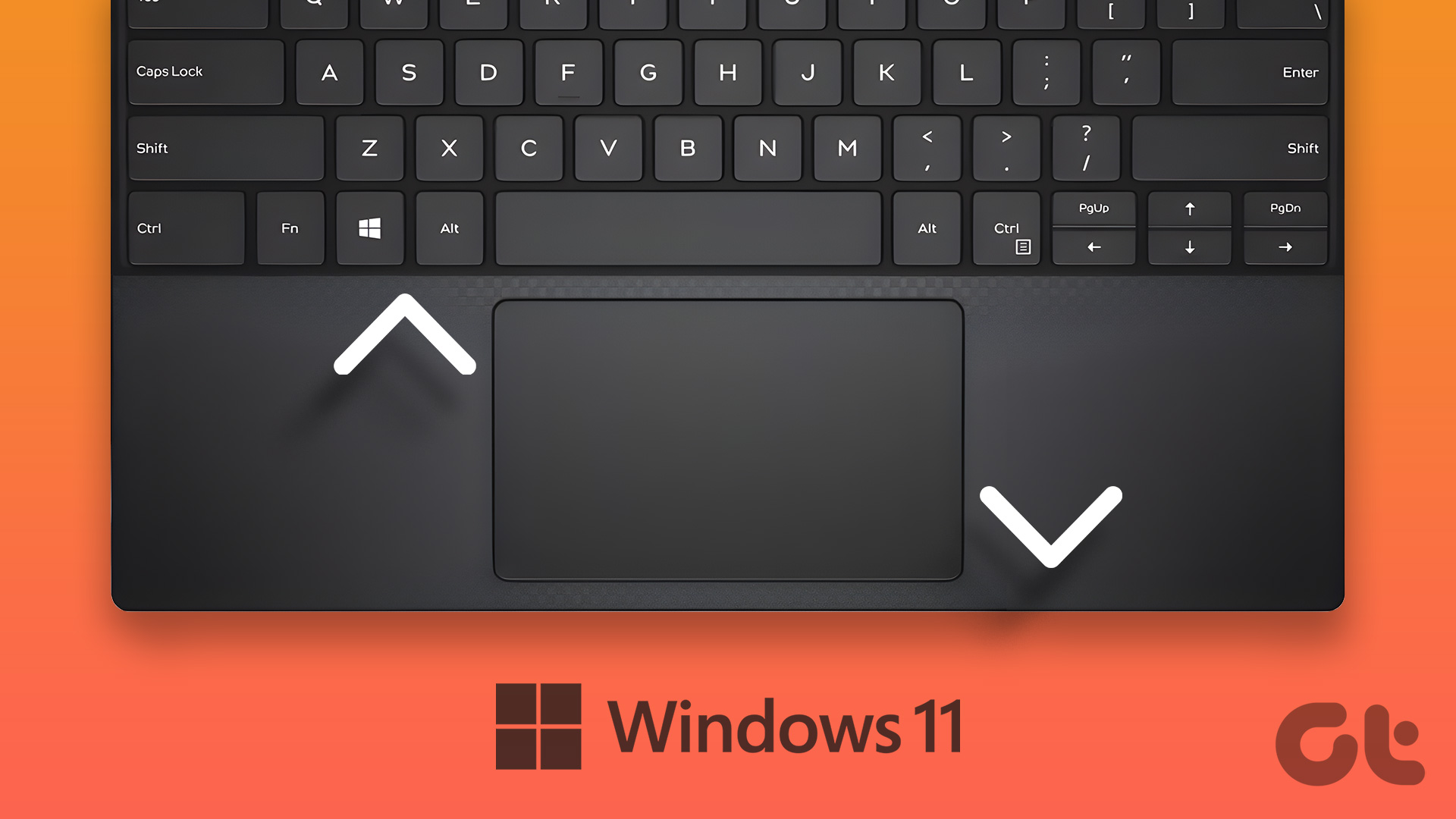
You can adjust touchpad sensitivity levels in Windows 11 through the Settings app, Control Panel, and Registry Editor. This guide will walk you through the three methods in detail. So, without further ado, let’s go.
1. Increase or decrease touchpad sensitivity through the Settings app
The Windows Settings app makes it easy to adjust touchpad-related settings on your laptop. It allows you to customize the touchpad gestures and gives you the option to increase or decrease the touchpad sensitivity levels as you wish.
To access touchpad settings in Windows 11, follow these steps:
Step 1: Open the Start menu and click on the gear icon to launch the Settings app. You can also press Windows key + I shortcut to quickly open the Settings app.

2nd step: Select Bluetooth & Devices from the left sidebar.

Step 3: Scroll down to click Touchpad.

Step 4: Click on Taps to enlarge it.
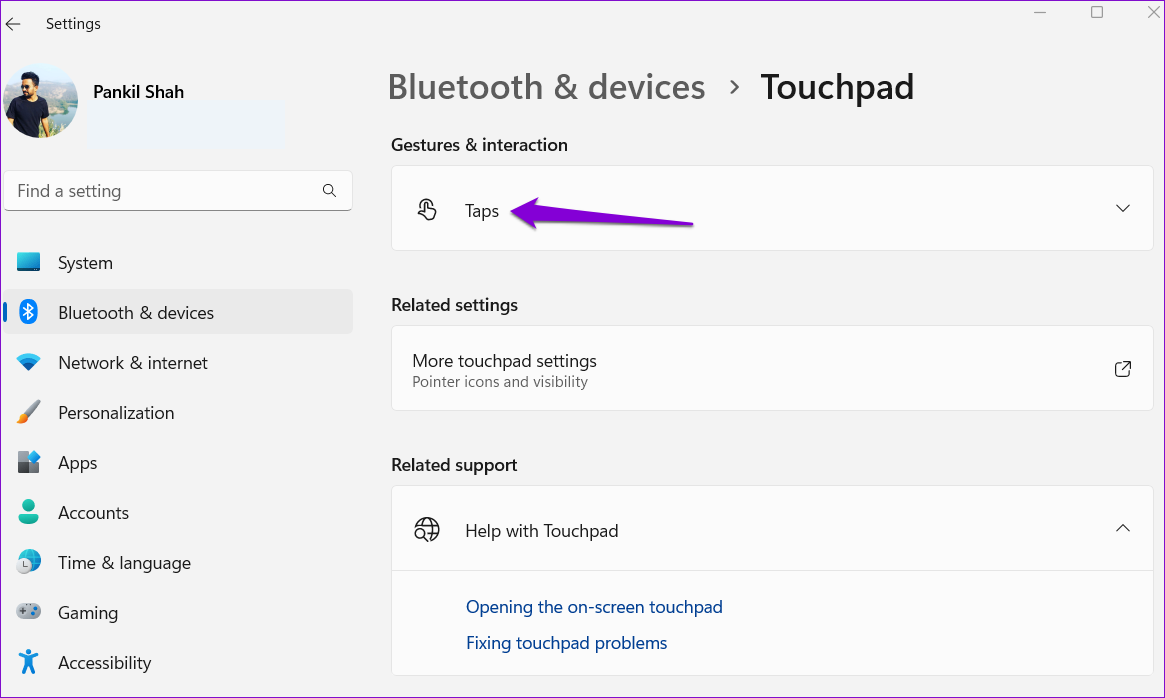
Step 5: Use the drop-down menu next to touchpad sensitivity to select from the available options: most sensitive, high sensitivity, medium sensitivity, and low sensitivity.
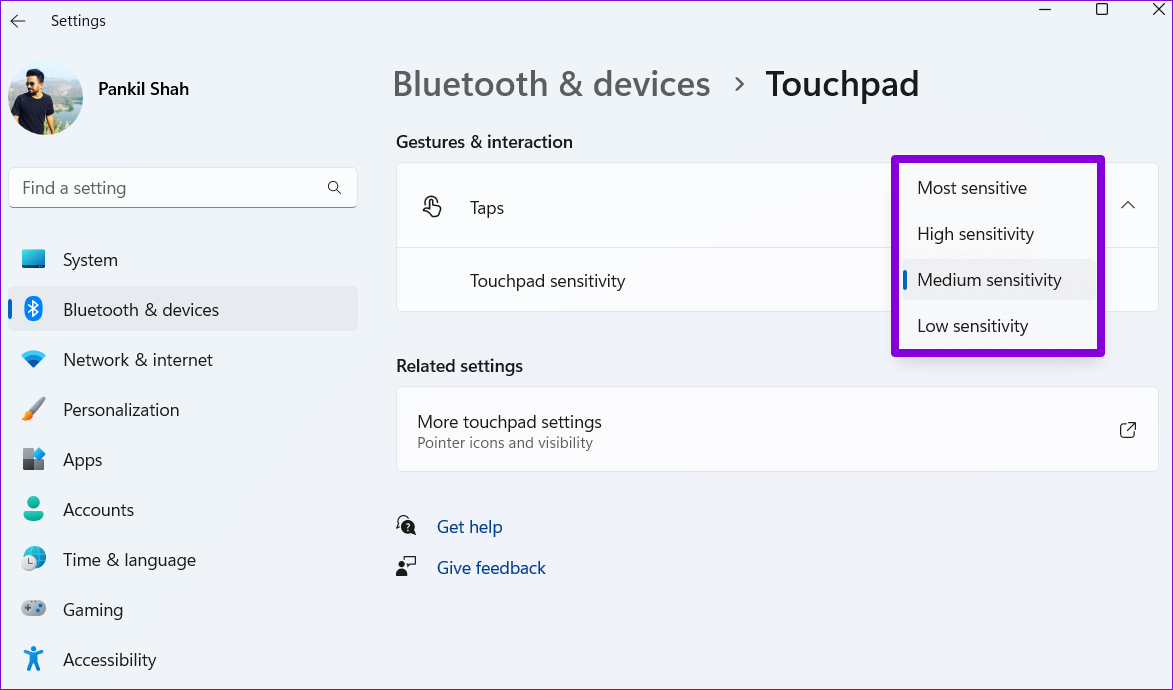
Any changes you make will take effect immediately. You can experiment with different levels of sensitivity until you find the one that works best for you.
2. Increase or decrease the touchpad sensitivity using the control panel
Do you prefer to use the Control Panel rather than the Settings app to configure various settings on your computer? The good news is that changing the touchpad sensitivity through the control panel is just as easy. Here are the steps you can follow.
Step 1: Right-click the Start icon and select Run from the list.
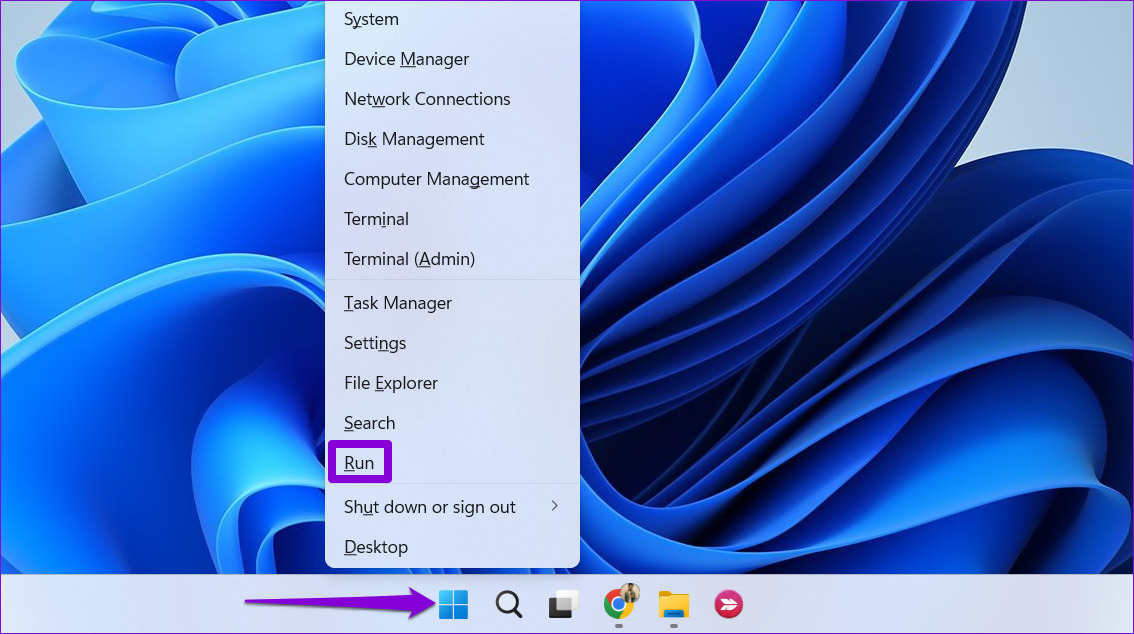
2nd step: Type control in the text box and press Enter.

Step 3: In the Control Panel window, use the drop-down menu in the upper right corner to select Small icons or Large icons. Then click Mouse.
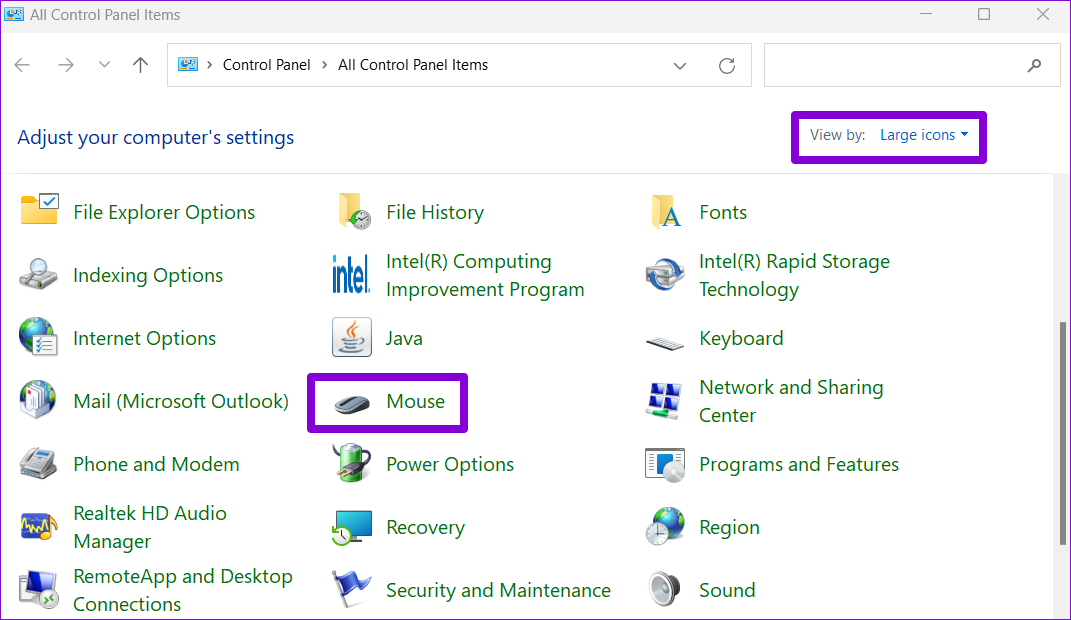
Step 4: Switch to the Pointer Options tab and drag the slider under Motion to the right to increase touchpad sensitivity. Similarly, move the slider to the left to reduce touchpad sensitivity.
Optionally, check the “Improve pointer precision” checkbox for better cursor precision.

Step 5: Press Apply followed by OK to save changes.
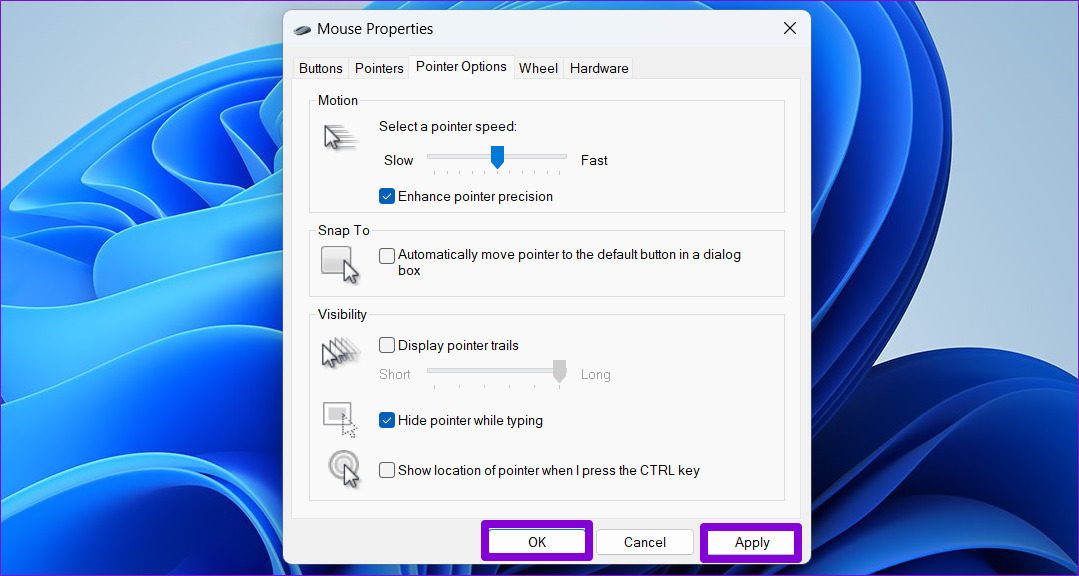
3. Increase or decrease touchpad sensitivity with Registry Editor
Another way to increase or decrease touchpad sensitivity in Windows is to use the Registry Editor. Since this method is slightly risky, you should only use it if the above two methods do not work.
Even if you are familiar with editing registry files, it is important to be careful, as these files contain important settings for Windows and its services. It’s a good idea to back up all registry files or create a restore point before making any changes.
Once you’ve done that, follow the next steps to change the touchpad sensitivity through the registry editor.
Step 1: Click the search icon on the taskbar or press Windows key + S shortcut to open the search menu. Type registry editor in the box and select Run as administrator.
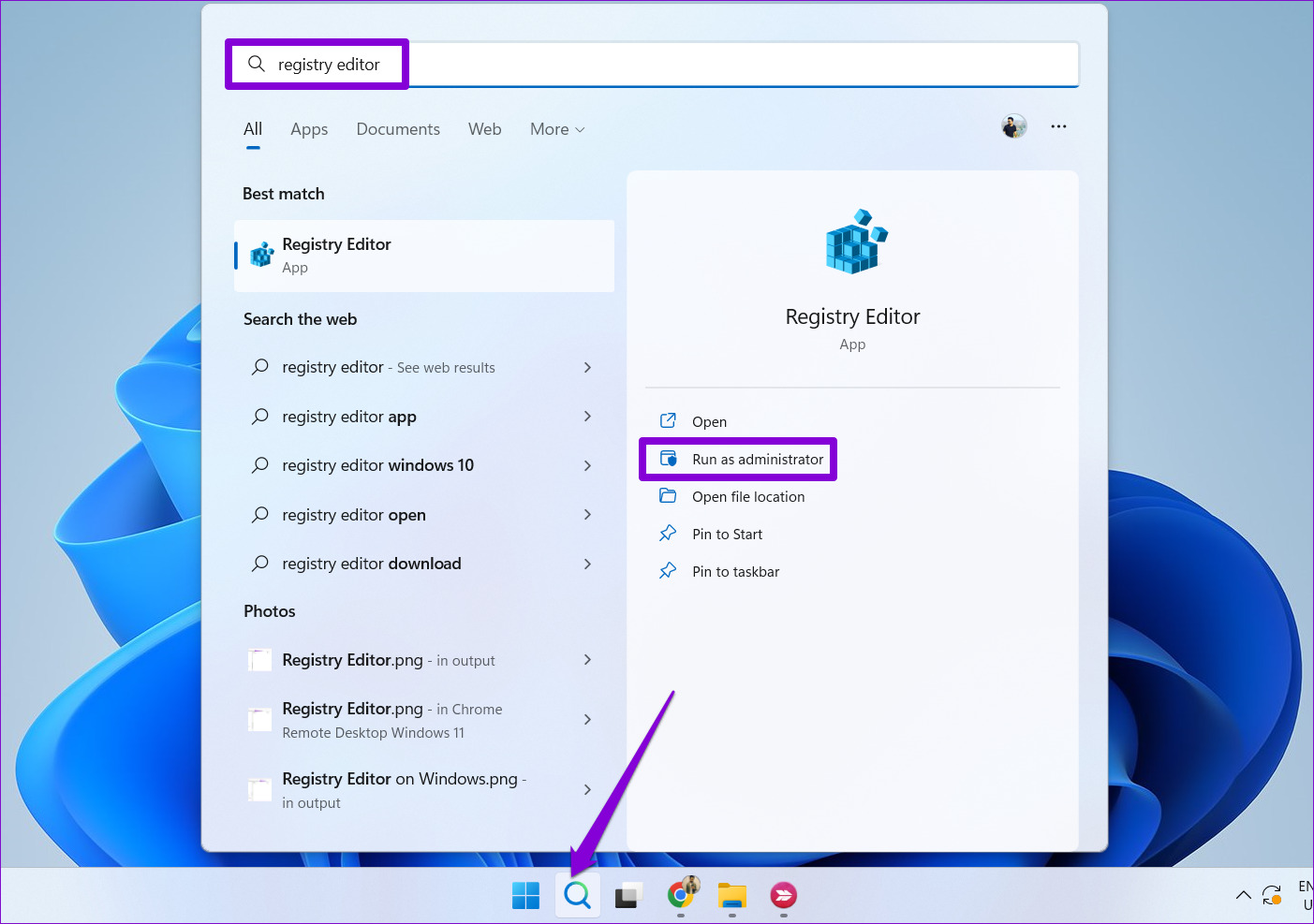
2nd step: Select Yes when the User Account Control (UAC) prompt appears.
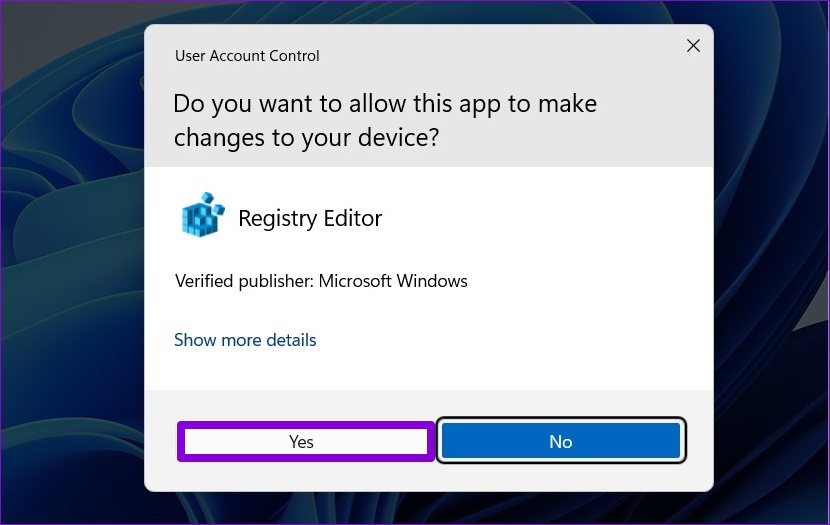
Step 3: Paste the following path into the address bar at the top and press Enter to quickly access the PrecisionTouchPad key:
ComputerHKEY_CURRENT_USERSoftwareMicrosoftWindowsCurrentVersionPrecisionTouchPad

Step 4: Double-click the AAPThreshold DWORD registry on your right.
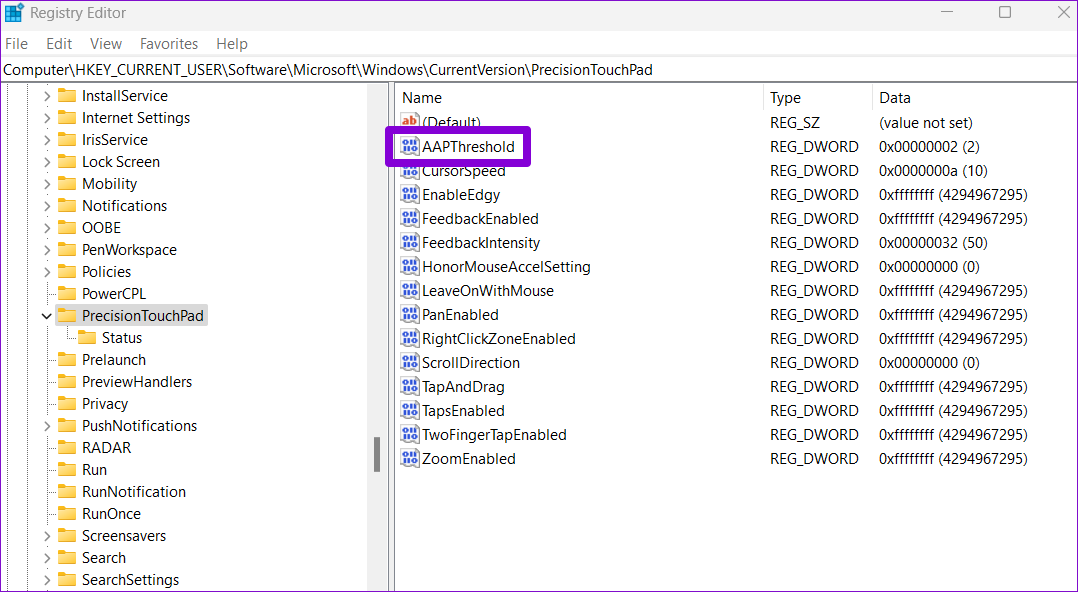
Step 5: In the Value data field, enter one of the following numbers to set the sensitivity of your touchpad:
- Most sensitive – 0
- High Sensitivity – 1
- Medium Sensitivity – 2
- Low sensitivity – 3
For example, if you want to set the touchpad sensitivity to medium, enter 2 in the Value data box.

Step 6: Click OK.
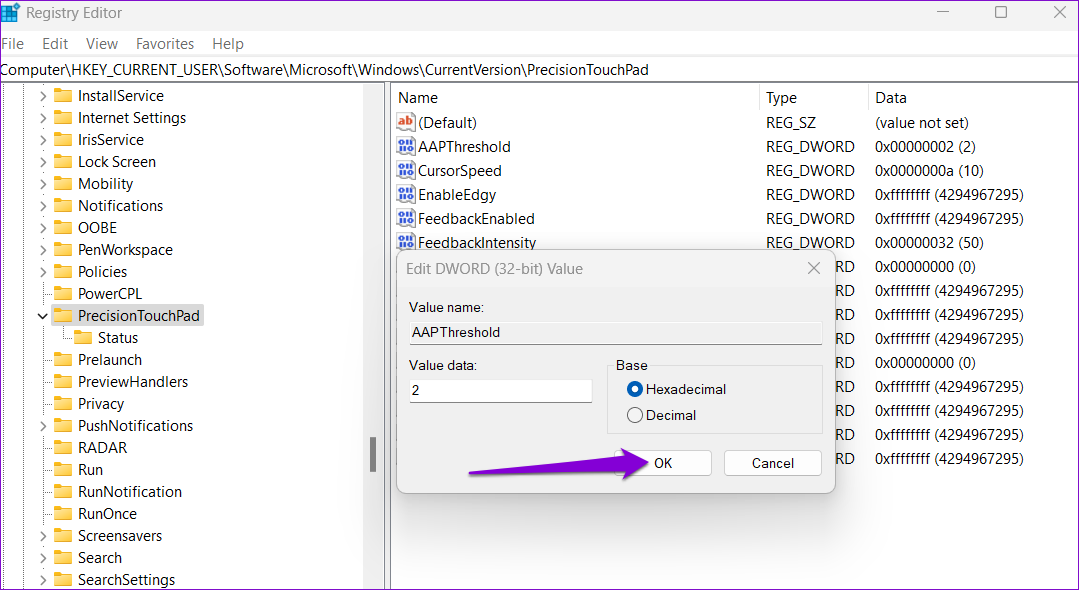
After completing the above steps, exit the Registry Editor window and restart your PC to apply the changes.
Find Your Touchpad Sweet Spot
Laptop touchpads are designed to suit a wide range of users. Selecting the right touchpad sensitivity is important if you are looking for a comfortable and productive user experience. Let us know in the comments which of the above methods you plan to use to change the touchpad sensitivity on your Windows 11 laptop.
If your touchpad is not responding, you may have accidentally disabled it or are using outdated drivers. See our guide on how to fix touchpad not working in Windows 11 for step-by-step instructions.
